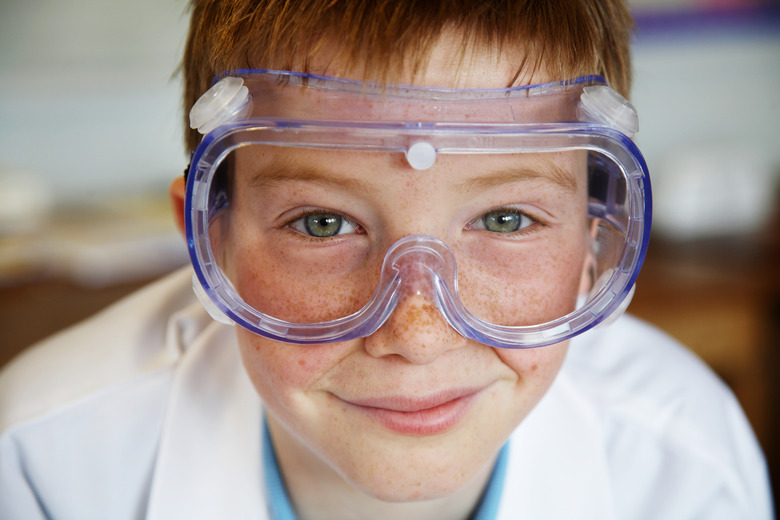Safety Precautions When Using Flames In Science
Students and professional scientists alike work safely with hot, open flame every day because they follow well-established lab safety rules. First, wear the right clothes and personal protective equipment (PPE) before you begin your experiments. Learn how to use the Bunsen burner, glassware and other equipment, and check them for defects. Know the substances you may be burning, melting or heating up. You can then embark on your scientific adventure with confidence, knowing the prep work was done right.
Personal Safety
Personal Safety
Your personal appearance before you even light the flame is a key safety consideration. Anything that is loose or dangling can potentially come into contact with the flame. Wear clothing that fits snugly to reduce the chances of the material catching fire. Participants with long hair should secure it away from the face so it doesn't fall down into the flame. Remove any long jewelry that might reach the flame. Safety gear is also key. Wear goggles when using the flame, especially if you're heating a glass container or using chemicals.
Equipment Inspection
Equipment Inspection
A Bunsen burner uses gas to create the flame often used in science experiments. Never assume that the equipment is in working condition. An inspection before each use allows you to check the gas valve and hoses. Look for any defects that could cause the burner to work improperly, such as kinking or cracks in the hose that carries the gas to the burner. Check the connection between the gas valve and the hose to ensure that it doesn't leak.
Material Setup
Material Setup
A clear workspace prevents accidental ignition of objects such as books, papers and science experiment materials. Set up the Bunsen burner on a solid, flat surface to avoid tipping. Keep the flame away from any combustible materials. Gather all of the necessary materials for the experiment before lighting the flame so you don't have to leave it unsupervised. Have your lighter or striker ready so you can light the flame as soon as you turn on the gas to the Bunsen burner. If others are in the lab with you, let them know you are lighting a flame.
Safe Flame Use
Safe Flame Use
A Bunsen burner allows you to control the flame by adjusting the collar that controls air flow. The flame needed varies by experiment, so find out that information before you put anything over the lit burner. Tongs allow you to safely hold items over the flames. Follow the experiment steps exactly, using the flame only as indicated to avoid injury or explosion. When you are finished with the flame, shut it off completely, ensuring that the gas valve is completely shut off. Allow the Bunsen burner and any items held over the flame to cool before touching them.
Cite This Article
MLA
Frost, Shelley. "Safety Precautions When Using Flames In Science" sciencing.com, https://www.sciencing.com/safety-precautions-using-flames-science-22224/. 25 April 2018.
APA
Frost, Shelley. (2018, April 25). Safety Precautions When Using Flames In Science. sciencing.com. Retrieved from https://www.sciencing.com/safety-precautions-using-flames-science-22224/
Chicago
Frost, Shelley. Safety Precautions When Using Flames In Science last modified August 30, 2022. https://www.sciencing.com/safety-precautions-using-flames-science-22224/
